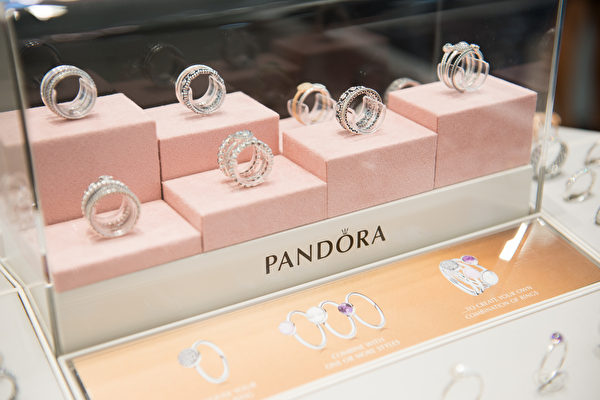As China’s consumer market remains weak, the jewelry retail industry is facing unprecedented challenges. Danish jewelry brand Pandora recently announced the closure of 100 stores in the Chinese market and initiated a staff reduction plan in response to the market conditions. Apart from Pandora, several other well-known brands have also been shutting down stores on a large scale.
Pandora entered the Chinese market in 2015 with its personalized concept of “bracelet + beads” and rapidly expanded, opening over 240 stores within four years. In 2019, Pandora’s sales in China peaked at 1.97 billion Danish krone, making China its important global market accounting for 9% of its worldwide business.
Since the outbreak of the COVID-19 pandemic, Pandora’s performance in China has been continuously declining. Sales dropped from 1.126 billion Danish krone in 2021 to 564 million krone in 2023, only reaching about 30% of its peak. As of 2025, the situation has worsened with a sharp decrease in the number of stores. The revenue share from the Chinese market has fallen from 9% in 2019 to the current 1%.
The challenges faced by Pandora are not unique, as the entire Chinese jewelry market is experiencing an unprecedented wave of store closures under the dual pressures of a sluggish consumer market and continuously rising international gold prices.
Well-known jewelry brands are scaling back their business operations. Chow Tai Fook closed a net total of 896 stores in the mainland market in the 2025 fiscal year; brands like Chow Sang Sang and Lao Feng Xiang are also steadily reducing their store networks.
“Three years ago, the stores were crowded, but now they are nearly deserted,” a jeweler told mainland media. Many store operators have expressed that even with strained operations, profitability is far from what it used to be, with immense pressure to stay afloat.
Industry analysts predict that the number of jewelry retail store closures nationwide in 2025 could reach 20,000, and the recovery prospects in the next two to three years remain uncertain.
In 2025, international gold prices have repeatedly hit historic highs, briefly exceeding $3,500 per ounce with a nearly 30% increase within the year. However, in stark contrast to the trend in gold prices, Chinese gold jewelry consumption has decreased by 28% year-on-year, reaching the lowest level since the 2009 financial crisis.
According to a recent report by the World Gold Council on the “2025 Second Quarter Review and Trend Analysis of the Chinese Gold Market,” gold jewelry consumption in China in the first half of the year has dropped to 194 tons, a 28% decrease compared to the previous year. The foreign exchange online portal Fxstreet stated that this is the lowest level for the same period since 2009 (excluding 2020 due to the impact of the COVID-19 pandemic).

